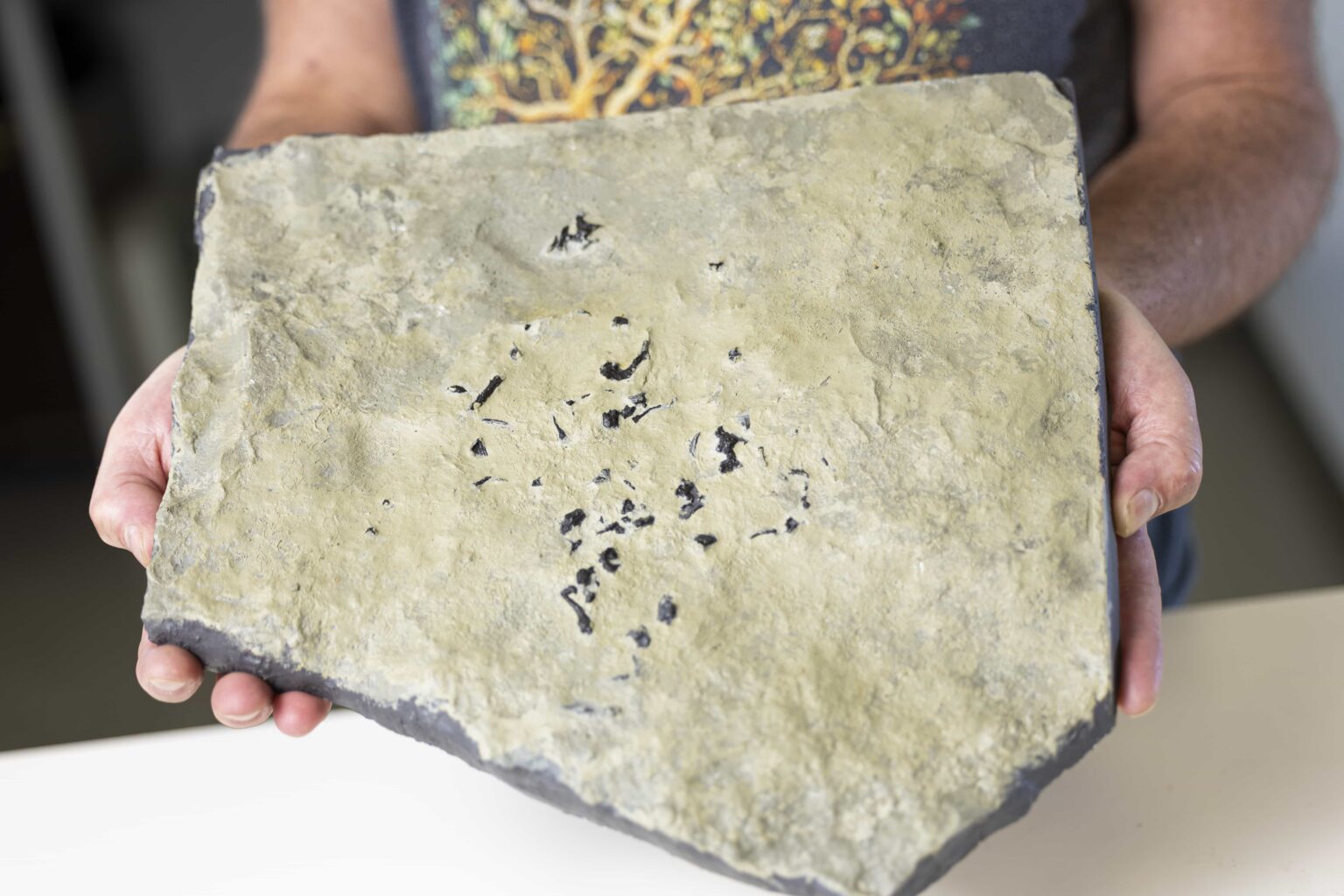A fossil has been discovered that has revealed a news species of a fanged reptile that once roamed Scotland.
Scientists have uncovered a previously unknown Jurassic creature that lived around 167 million years ago.
The fossilised beast, known as Breugnathair elgolensis, was discovered on the Isle of Skye.
READ MORE: Pine Marten spotted on camera trap for first time in 100 years
It has since been studied by experts who found it had a snake-like jaw and highly recurved teeth, similar to those of modern-day pythons, as reported by What’s The Jam.
Unlike living snakes, it had the proportions and limbs of a lizard.
The fossil is among the oldest and most complete Jurassic lizards known to science.
According to the scientists, the Breugnathair was a squamate, the largest order of scaled reptiles.
“The species has been placed in a new family Parviraptoridae, an enigmatic group of extinct, predatory squamates,” they said in a report.
“Previously known from very incomplete remains, parviraptorids were thought by some to be the first snakes.
“Breugnathair might therefore provide evidence of the lizard-like ancestors of snakes, but it also has primitive anatomical traits suggesting that parviraptorids were stem-squamates, the predecessors of all lizards and snakes.”
In other words, this fossil may represent a really ancient branch on the evolutionary tree, from which all modern lizards and snakes eventually evolved.
Lead author Dr Roger Benson, who is the curator of paleontology at the American Museum of Natural History, said: “Snakes are remarkable animals that evolved long, limbless bodies from lizard-like ancestors.
“Breugnathair has snake-like feature of the teeth and jaws, but in other ways is surprisingly primitive.
“This might be telling us that snake ancestors were very different to what we expected, or it could instead be evidence for evolution of predatory habits in a primitive, extinct group.”
In addition to the American Museum of Natural History and National Museums Scotland, the study involved researchers from the University of Cambridge and University College London.
Professor Susan Evans of UCL, who co-led the study, said: “The Jurassic fossil deposits on the Isle of Skye are of world importance for our understanding of the early evolution of many living groups, including lizards which were beginning their diversification at around this time.
“I first described parviraptorids some 30 years ago based on more fragmentary material, so it’s a bit like finding the top of the jigsaw box many years after you puzzled out the original picture from a handful of pieces.
“The mosaic of primitive and specialised features we find in parviraptorids, as demonstrated by this new specimen, is an important reminder that evolutionary paths can be unpredictable.”
Whether Breugnathair was a direct ancestor of snakes or simply a bizarre evolutionary offshoot, one thing is certain: this fanged reptile has given scientists a jaw-dropping new glimpse into the origins of today’s slithering predators.
READ MORE: Water buffalo set loose in British countryside to churn up mud and boost wildlife
